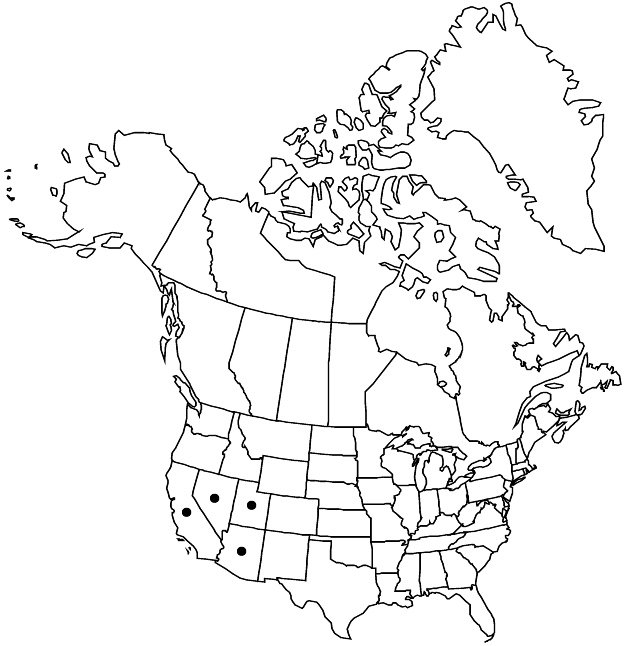Difference between revisions of "Eriogonum heermannii var. sulcatum"
in P. A. Munz, Suppl. Calif. Fl., 62. 1968.
FNA>Volume Importer |
FNA>Volume Importer |
||
| Line 11: | Line 11: | ||
|name=Eriogonum sulcatum | |name=Eriogonum sulcatum | ||
|authority=S. Watson | |authority=S. Watson | ||
| + | |rank=species | ||
|publication_title=Proc. Amer. Acad. Arts | |publication_title=Proc. Amer. Acad. Arts | ||
|publication_place=14: 296. 1879 | |publication_place=14: 296. 1879 | ||
| Line 17: | Line 18: | ||
|name=Eriogonum heermannii subsp. sulcatum | |name=Eriogonum heermannii subsp. sulcatum | ||
|authority=(S. Watson) S. Stokes | |authority=(S. Watson) S. Stokes | ||
| + | |rank=subspecies | ||
}} | }} | ||
|hierarchy=Polygonaceae;Polygonaceae subfam. Eriogonoideae;Eriogonum;Eriogonum subg. Eucycla;Eriogonum heermannii;Eriogonum heermannii var. sulcatum | |hierarchy=Polygonaceae;Polygonaceae subfam. Eriogonoideae;Eriogonum;Eriogonum subg. Eucycla;Eriogonum heermannii;Eriogonum heermannii var. sulcatum | ||
| Line 41: | Line 43: | ||
-->{{#Taxon: | -->{{#Taxon: | ||
name=Eriogonum heermannii var. sulcatum | name=Eriogonum heermannii var. sulcatum | ||
| − | |||
|authority=(S. Watson) Munz & Reveal in P. A. Munz | |authority=(S. Watson) Munz & Reveal in P. A. Munz | ||
|rank=variety | |rank=variety | ||
| Line 56: | Line 57: | ||
|publication year=1968 | |publication year=1968 | ||
|special status= | |special status= | ||
| − | |source xml=https://jpend@bitbucket.org/aafc-mbb/fna-data-curation.git/src/ | + | |source xml=https://jpend@bitbucket.org/aafc-mbb/fna-data-curation.git/src/f50eec43f223ca0e34566be0b046453a0960e173/coarse_grained_fna_xml/V5/V5_610.xml |
|subfamily=Polygonaceae subfam. Eriogonoideae | |subfamily=Polygonaceae subfam. Eriogonoideae | ||
|genus=Eriogonum | |genus=Eriogonum | ||
Revision as of 21:55, 16 December 2019
Subshrubs, spreading, densely branched, (0.5–)1–8 × 2–8 dm. Leaf blades linear-lanceolate to elliptic or spatulate, 0.4–1.2(–1.5) × 0.2–0.8 cm, thinly tomentose abaxially. Inflorescences 1–5(–8) × 3–10 cm; branches diffuse, with dichotomously arranged involucres, slender, sharply ridged and deeply grooved, minutely scabrellous, not spinose. Involucres campanulate, 0.7–1.5(–2) × 0.7–1.5(–2) mm. Flowers 1.5–2.5 mm; perianth yellowish white.
Phenology: Flowering Apr–Oct.
Habitat: Limestone cliffs and outcrops, saltbush, blackbrush, sagebrush, and mountain mahogany communities, scrub oak and pinyon-juniper woodlands
Elevation: 700-2700 m
Distribution

Ariz., Calif., Nev., Utah.
Discussion
Variety sulcatum is locally common and occurs typically on limestone outcrops and cliff-faces. It is found in desert ranges of southeastern Inyo and northeastern San Bernardino counties, California, in Clark and southern Lincoln and Nye counties, Nevada, and in Washington County, Utah. In Arizona the plants occur in northern Mohave County and into northwestern Coconino County. The variety would make an ideal addition to the rock garden as a subshrub if one were willing to allow sufficient time for the plants to mature. This slow-growing plant forms dense, dark green clumps of tangled inflorescence branches and is attractive even without flowers.
Selected References
None.